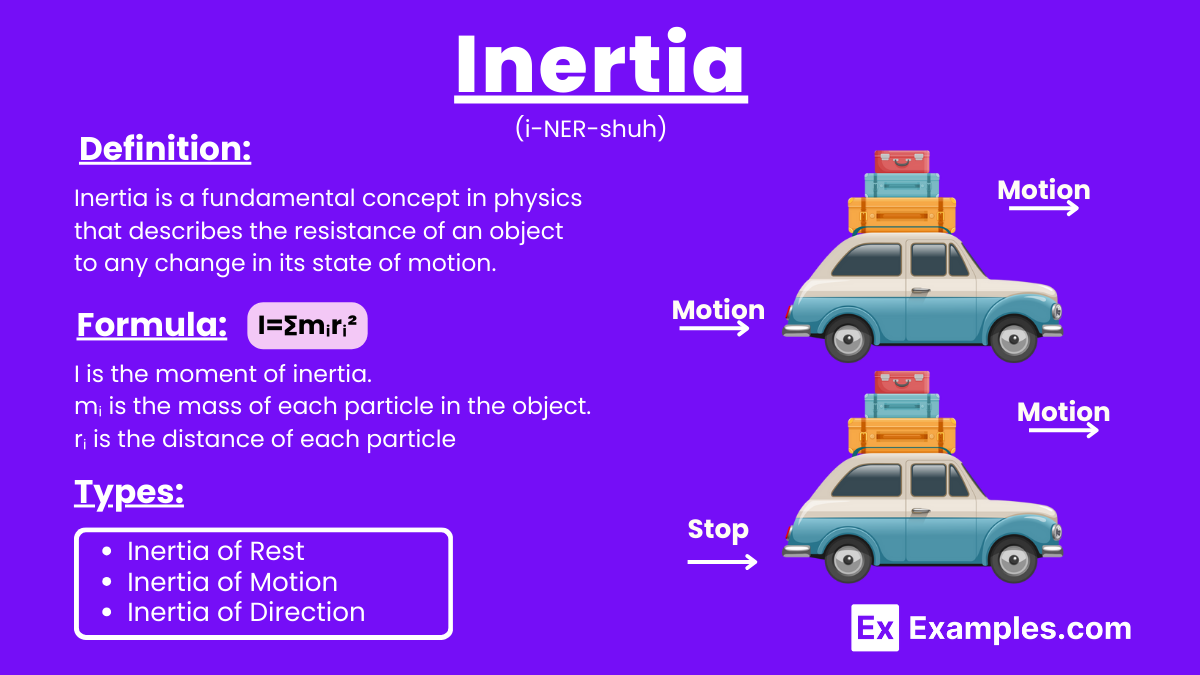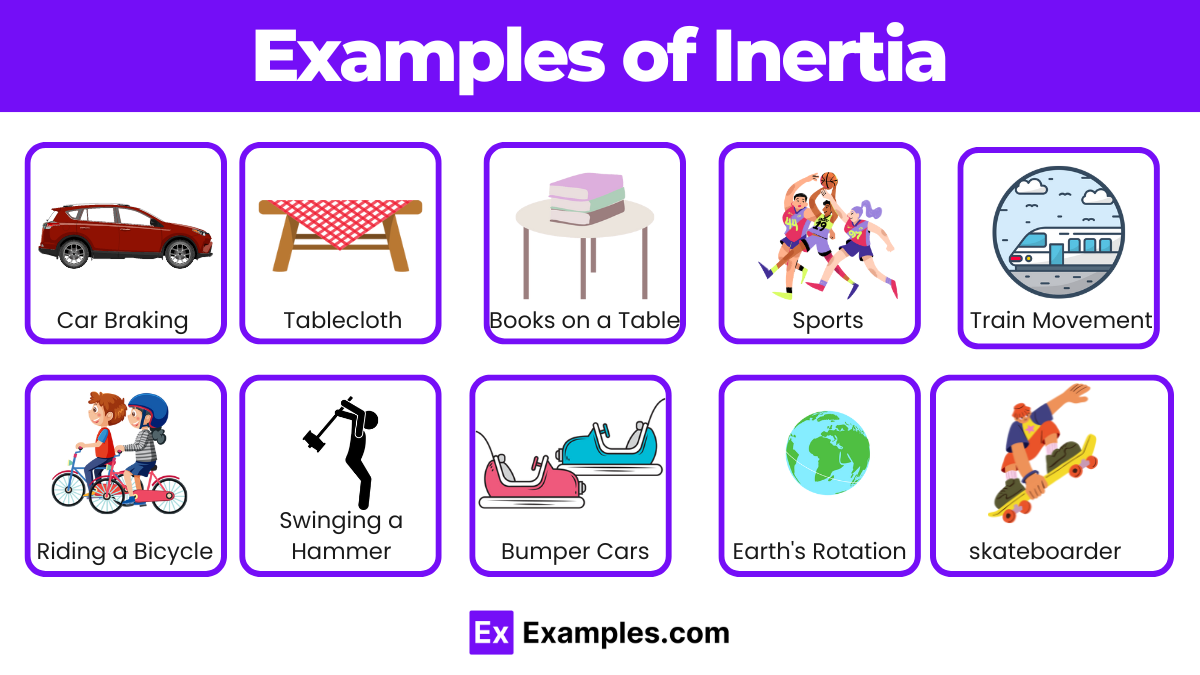What is inertia?
The resistance of an object to change its temperature
The tendency of an object to remain at rest or in uniform motion
The ability of an object to conduct electricity
The force required to move an object


Inertia is a fundamental concept in physics that describes the resistance of an object to any change in its state of motion. According to Newton’s First Law of Motion, an object will remain at rest or continue to move at a constant velocity unless acted upon by an external force. This property of matter means that a stationary object will not start moving on its own, and a moving object will not stop or change direction without an external influence. Inertia depends solely on the mass of the object: the greater the mass, the greater the inertia. This principle explains why heavier objects are more difficult to accelerate or decelerate compared to lighter ones.
Inertia is the tendency of an object to resist changes in its motion. According to Newton’s First Law of Motion, an object at rest stays at rest, and an object in motion continues moving at a constant speed in a straight line unless acted upon by an external force. The greater the object’s mass, the greater its inertia.
The formula for inertia is often associated with the moment of inertia (I), which measures an object’s resistance to rotational motion around an axis. The moment of inertia depends on the object’s mass distribution relative to the axis of rotation. The general formula is:
I=∑mᵢrᵢ²
where:
The unit of inertia, particularly the moment of inertia, is expressed in terms of mass and distance squared. In the International System of Units (SI), the unit for moment of inertia is:
SI Unit = kilogram metre squared (kg⋅m²)
In the imperial or US customary units, the unit for moment of inertia is:
pound-foot-second squared (lbf⋅ft⋅s²)
These units reflect the dependence of the moment of inertia on both the mass of the object and the square of the distance from the axis of rotation.

Mass is directly proportional to inertia; objects with more mass have greater inertia and are harder to accelerate or decelerate.
When a car suddenly stops, passengers lurch forward due to their body’s inertia, which resists the change in motion.
Inertia is an object’s resistance to changes in motion, while momentum is the product of an object’s mass and velocity, describing its motion.
Newton’s First Law, or the law of inertia, states that an object will remain at rest or in uniform motion unless acted upon by an external force.
Seat belts restrain passengers, preventing them from continuing forward motion due to inertia when a car abruptly stops.
An object with no net external force will maintain its current state of rest or constant velocity due to inertia.
Inertia depends on mass distribution and the object’s shape in rotational motion, but for linear motion, only mass matters.
Inertia affects how athletes start, stop, and change direction, influencing their performance and the design of sports equipment.
In space, where there’s minimal external force, objects continue moving indefinitely in a straight line due to inertia.
A heavy object has more inertia, requiring more force and time to change its motion compared to a lighter object.
Text prompt
Add Tone
10 Examples of Public speaking
20 Examples of Gas lighting
What is inertia?
The resistance of an object to change its temperature
The tendency of an object to remain at rest or in uniform motion
The ability of an object to conduct electricity
The force required to move an object
Which physical quantity is directly related to inertia?
Velocity
Force
Mass
Temperature
What is an example of inertia in everyday life?
A car accelerating on a highway
A book lying on a table remaining stationary
A bicycle going downhill with increasing speed
A ball being thrown into the air
How does inertia affect a moving object in space?
The object will stop moving
The object will keep moving in the same direction at a constant speed
The object will accelerate
The object will change direction
Why do passengers lurch forward when a car suddenly stops?
Due to acceleration
Due to inertia
Due to gravity
Due to velocity
Which of the following statements is true about inertia?
Inertia only applies to objects at rest
Inertia only applies to objects in motion
Inertia applies to both objects at rest and in motion
Inertia is not related to mass
What is the effect of increasing mass on the inertia of an object?
It decreases inertia
It increases inertia
It has no effect on inertia
It changes the direction of inertia
Which of the following is an example of inertia in motion?
A ball rolling on a flat surface coming to a stop
A person pushing a stationary car
A spacecraft moving in outer space without engine power
A leaf falling to the ground
What does Newton's first law of motion state about inertia?
Objects at rest will always move
Objects in motion will eventually stop
An object will remain at rest or in uniform motion unless acted upon by an external force
Force is proportional to acceleration
How is inertia related to Newton's second law of motion?
Inertia is the same as acceleration
Inertia is not related to Newton's second law
Inertia provides resistance that affects acceleration
Inertia determines the force needed to accelerate
Before you leave, take our quick quiz to enhance your learning!

